EVS’s new chief executive is eyeing news and entertainment for the company’s next stage of growth. George Bevir reports
It’s fitting that a former international sportsman should end up in charge of a company like EVS, which is inextricably linked with the coverage of live sporting events.
Joop Janssen’s time digging, setting and spiking for the Netherlands national volleyball team is well behind him (despite being 6ft 5 inches, he was considered too short to make it as a professional) and his focus is now on steering EVS through its next stage of growth.
Prior to Janssen’s arrival, EVS was managed by co-founder Pierre L’Hoest, who helped set up the company in 1994. Janssen describes L’Hoest as a “real visionary” but says EVS has outgrown its management philosophy and structure.
“The company started a lot of different activities and maybe isn’t as focused as it should be,” he says, underlining the point by affectionately describing some of the EVS staff as “like the Duracell bunny”, with enthusiasm and energy but not enough direction.
As Broadcast TECH went to press, a strategy plan for the next three years was due to be published, giving Janssen the opportunity to put his stamp on the company.
Janssen joined EVS six months ago, but his association with the Belgium-based manufacturer dates back to 2003. When Janssen was chief exec at Vitec Videocom, its parent firm Vitec Group initiated discussions with EVS about a possible merger of the two companies.
Talks got as far as “a deal and a handshake”, but a tie-up foundered over financing. Since then, EVS’s annual revenues have grown from €40.4m (£34.4m) to €106.9m (£91.1m) in 2011, driven by its dominance of the live sport market.
At the heart of EVS’s offering is the XT production server, which allows live productions to control and play HD and 3D content in real time, with continuous recording during replays. EVS provided 750 of its XT range of servers to broadcasters at the London Olympics and 220 servers at Uefa Euro 2012, helping the firm achieve record sales of 112.3m (£96m) for the first nine months of last year.
With such a strong presence in sport, it’s no surprise that revenues peak during the quarters when major sporting events are staged, causing profits to rise during the even years. But EVS is a public company, and investors aren’t keen on such spiky results.
So it’s Janssen’s job to lead the company further into news and entertainment to flatten out the peaks and troughs.
In 2011, 45% of the firm’s revenues came from the studios sector (with 55% from OBs) but Janssen says studios now account for around 50% of its business.
“News and entertainment are growing faster than sport, which is a healthy development because entertainment is an annual cycle rather than every two or four years,” he says.
Inroads into entertainment
Janssen says when it came to moving into new areas, the “pull was maybe stronger than the push”.
It started when broadcasters such as Sky began finding a use for the company’s servers in other fast-turnaround environments outside of sport. Now, EVS operators using the firm’s LSM control system to drive its servers are a staple of shows like ITV’s The X Factor and C4’s 10 O’Clock Live and Alan Carr: Chatty Man.
EVS is well positioned to benefit from broadcasters’ attempts to fend off the advances of on-demand services by shoring up their linear schedules with live shows. It also wants to fuel the growth of second-screen apps by providing broadcasters with the tools to swiftly deliver content to tablets.
“If you look at one camera for more than five minutes, it is not very entertaining,” says Janssen. “But if you combine 27 cameras around the pitch, add slow motion and highlights, and the possibility of content delivered to a second screen so people at home can replay their own favourite scenes, then it enriches the content, and that is where EVS is at its strongest.”
Although entertainment is a sector that will receive more attention from EVS - the company estimates the studio market is worth around £510m, which it says is 10 times the size of the OB market - live sport is still the arena where new ideas are born, thanks in part to the lead times of events like the Olympics, the Euros and the World Cup.
There are also commercial imperatives to develop new services. The last set of Premier League rights were sold to Sky and BT for a total of £3.018bn - 70% more than the previous three-year deal. The rise was in keeping with the last NFL deal, which saw US networks Fox, NBC and CBS agree to pay almost $28bn (£17.7bn) in fees over nine years - a 63% increase on their previous contracts.
“Once those broadcasters have won the rights, they say, ‘OK, what now? How do we pay for it?’ One way is to sell advertising space on a tablet,” says Janssen.
As well as launching the third generation of its XT servers in 2011, EVS unveiled C-Cast, a system for delivering content, including multiple camera angles, to second-screen platforms. It processes and transfers footage recorded on EVS’s XT and XS production servers, along with descriptive metadata, graphics and statistics, to web-connected devices.
Janssen says broadcasters’ response to the software has been “overwhelming” but rights structures have limited its deployment.
“The technology is there and it works, and people see the value it adds, but the current contracts don’t always allow for a separate source of income, so sometimes it’s about waiting for a deal to finish.”
UK talks
France’s Canal Plus is using C-Cast to power an app for its Ligue 1 coverage, while Japanese media firm Dentsu is using it to complement coverage of volleyball matches. It has yet to be deployed in the UK, but Janssen is confident that talks with UK broadcasters will eventually bear fruit.
Future development of the company’s XT and XS servers will come in the form of increased IP connectivity, to address the demands of remote productions in need of more collaborative workflows.
Janssen is already looking ahead to Euro 2020,when Uefa plans to spread the tournament across 13 European countries.
“That will be a real test,” he says. “[Uefa] will need the right technology to deliver that, and we can help them. Bringing so many stadiums into one central studio is a fantastic challenge to have but, for us, it’s like being a fish in water.”
Joop Janssen on…
4K “Broadcasters need to use that format and resolution to create more compelling content. They won’t attract more viewers if they just show the same content but in a higher resolution.”
Competition “We don’t look in the mirror to see who is coming; we always look ahead and work with broadcasters to create technology the industry needs.”
Hardware vs software “Although we are seen as a hardware-heavy company, only 5% of our engineers work on hardware.”
Growth “I don’t think the geographical split that we have now represents the market opportunity. Latin America and North America are very attractive for us.”
Factfile
- Career
Sep 2012-date Chief executive, EVS
Jul 2003-Sep 2012 Chief executive, Vitec Videocom
Mar 2002-Jun 2003 VP and general manager, servers and news, Thomson Grass Valley
Feb 1998-Feb 2002 VP and general manager, Broadcast North America, Philips Electronics, BTS and Thomson Grass Valley (US)
Mar 1996-Feb 1998 General manager, Philips Electronics Digital Networks
- Personal
Lives Cambridge, UK
Family Married to Louise. Two children who will soon be at university.
Gadgets The iPad. With all my travelling, I’m keen to keep toys and accessories to a minimum. At home I love my Philippe Starck wireless speakers.
Outside work Golf, tennis, social and family activities.
Career advice Always put yourself in a position where you can learn from others.
TV Not much - some live sport and documentaries, the rest via social media on-the-go.


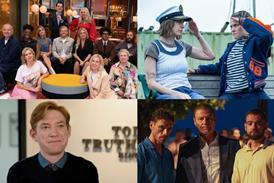





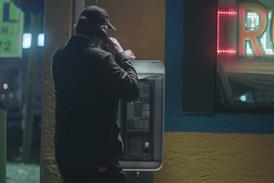
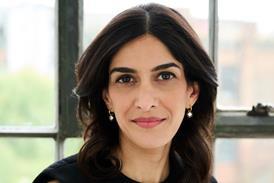


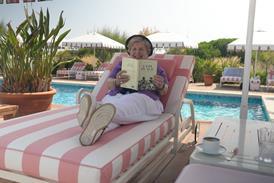








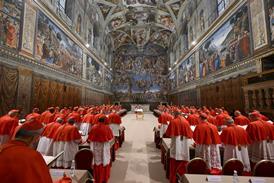




No comments yet